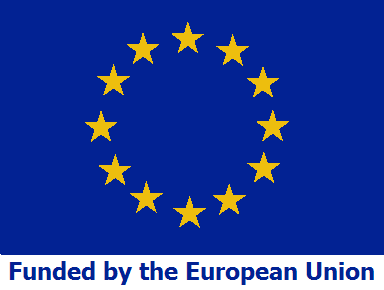HEREPLUS
Health Risk from Environmental Pollution Levels in Urban Systems

Finanziamento: European Commission DG-Research
Periodo: November 2008 – November 2011
Budget totale progetto:---
Budget totale CNR IIA:---
Responsabile Scientifico: Prof. Fausto Manes ( La Sapienza ) - Prof. Antonio Boccia ( La Sapienza )
Responsabile Gestionale: Riccardo Carelli ( Sapienza Innovazione ) - Cinzia Perrino (CNR IIA)
Abstract del progetto
Pollution is a major concern for most European cities, especially for those located in the Mediterranean, where climatic conditions encourage O3 and PM concentration during summer and winter periods.
Although epidemiological studies demonstrated a strong correlation between cardio-respiratory events and exposure to high concentrations of PM and O3, maps of risk in big cities are currently lacking.
The project will assess how the exposure to air pollution is correlated with the entity of cardiovascular and respiratory diseases. This research will develop and validate risk maps starting from pre-existent environmental and health data, through the deployment of a new epidemiological and statistical approach


The project is divided into six Work Packages (WP): one devoted to project management (WP1), one to the dissemination and utilization of results (WP6) and four operational WPs (WP2-WP5) devoted to the progressive steps necessary to complete the primary aim of the project. This aim is the establishment of standardised risk maps for human health in four large European urban areas (Rome, Madrid, Athens and Dresden), by linking distribution maps of pollutants as tropospheric ozone (O3) and particulate matter (PM) to the main cardiorespiratory diseases observed at the local population level.
The four operational WPs will be coordinated to aim at:
• Constitution of databases. Increased knowledge on the pollutant concentrations and distribution in the chosen urban areas, and their relationship with the mortality and morbidity of local inhabitants. Characterising the role of green areas within the urban texture to act as a sink for pollutants;
• Modelling & Mapping. Improvement of modelling tools for simulating the response of human health (specific mortality and morbidity) to environmental levels of pollutants including adaptation of existent models to local situations of the studied urban areas. Simulation of O3 and PM uptake / deposition dynamics of different plant species, located in public parks and gardens in their specific climatic, edaphic and management conditions present in the neighbouring urban areas. Production of distribution maps of pollutants, environmental variables and Mortality/Morbidity concerning all the four urban areas considered in the project. The linkage between environmental pollutants and mortality/morbidity will be assessed by selection of the more suitable epidemiological models. The selected model will allow to calculate the Odds Ratio for the estimation of sanitary risk;
• Risk Map production and validation. Release of integrated health risk maps, in GIS environment, for each urban area considered in the project. Validation of the resulting risk maps. Evaluation of uncertainties due to potential confounding factors by appropriate statistical methods. New epidemiological and statistical approaches, and new procedures for elucidating the geographic relationship among environmental risks, exposures and occurrence of related cardio-respiratory diseases in the population living in different urban areas;
• Development of a decision-support system. Assessment and ranking of alternative management strategies, with regard to characteristics of local urban areas, aiming at minimizing the sanitary costs. Improved knowledge of the actual and potential role of different plant species growing in the green areas located in the urban texture to mitigate pollutant impacts, through specific management exercises applied to the different green urban areas. Formalization of best practices of urban environmental management, based on the results and the knowledge achieved by project activities;
The four operational WPs will be coordinated to aim at:
• Constitution of databases. Increased knowledge on the pollutant concentrations and distribution in the chosen urban areas, and their relationship with the mortality and morbidity of local inhabitants. Characterising the role of green areas within the urban texture to act as a sink for pollutants;
• Modelling & Mapping. Improvement of modelling tools for simulating the response of human health (specific mortality and morbidity) to environmental levels of pollutants including adaptation of existent models to local situations of the studied urban areas. Simulation of O3 and PM uptake / deposition dynamics of different plant species, located in public parks and gardens in their specific climatic, edaphic and management conditions present in the neighbouring urban areas. Production of distribution maps of pollutants, environmental variables and Mortality/Morbidity concerning all the four urban areas considered in the project. The linkage between environmental pollutants and mortality/morbidity will be assessed by selection of the more suitable epidemiological models. The selected model will allow to calculate the Odds Ratio for the estimation of sanitary risk;
• Risk Map production and validation. Release of integrated health risk maps, in GIS environment, for each urban area considered in the project. Validation of the resulting risk maps. Evaluation of uncertainties due to potential confounding factors by appropriate statistical methods. New epidemiological and statistical approaches, and new procedures for elucidating the geographic relationship among environmental risks, exposures and occurrence of related cardio-respiratory diseases in the population living in different urban areas;
• Development of a decision-support system. Assessment and ranking of alternative management strategies, with regard to characteristics of local urban areas, aiming at minimizing the sanitary costs. Improved knowledge of the actual and potential role of different plant species growing in the green areas located in the urban texture to mitigate pollutant impacts, through specific management exercises applied to the different green urban areas. Formalization of best practices of urban environmental management, based on the results and the knowledge achieved by project activities;
• Develop risk maps relating human health with pollutant concentrations (O3 and PM) by using the ArcGis approach, taking into account existing and validated epidemiological models in some of the major and more exposed European urban areas, namely Rome, Madrid, Athens and Dresden;
• Improve the knowledge of the potential role of different urban vegetation in order to mitigate PM and O3 pollution levels, by providing best practices regarding the choice of no-VOCs emitting species and through the management of large green areas located in different neighboring urban areas;
• Deliver guidelines for municipal managers, administrators and national and international Environmental Agencies appointed to establish urban-environmental measures, which combine risk maps, urban vegetation as a sink for ozone and PM, and minimize health costs. These guidelines will be formalized in an Operational Manual of best practices, recommendations and designs for municipal laws, and may be used as a base-line for municipal administrations and European policies;
• Encourage coordination among epidemiologists, biostatisticians, environmental scientists, GIS specialists, bringing about a further step towards realizing the full potential of GIS technology in environmental and health research, and leading to innovative solutions. Moreover, given the different institutions involved as partners at a European level (working in the domains of health, environment, statistics, physics and climatology), HEREPLUS will contribute to the development of a possible multidisciplinary network;
• Distribute guidelines and disseminate best practices in Europe through international workshops and a conclusive report;
• Support the implementation of a Global Earth Observation System of Systems (GEOSS) initiative and of an Environment and Health Action Plan.
• Improve the knowledge of the potential role of different urban vegetation in order to mitigate PM and O3 pollution levels, by providing best practices regarding the choice of no-VOCs emitting species and through the management of large green areas located in different neighboring urban areas;
• Deliver guidelines for municipal managers, administrators and national and international Environmental Agencies appointed to establish urban-environmental measures, which combine risk maps, urban vegetation as a sink for ozone and PM, and minimize health costs. These guidelines will be formalized in an Operational Manual of best practices, recommendations and designs for municipal laws, and may be used as a base-line for municipal administrations and European policies;
• Encourage coordination among epidemiologists, biostatisticians, environmental scientists, GIS specialists, bringing about a further step towards realizing the full potential of GIS technology in environmental and health research, and leading to innovative solutions. Moreover, given the different institutions involved as partners at a European level (working in the domains of health, environment, statistics, physics and climatology), HEREPLUS will contribute to the development of a possible multidisciplinary network;
• Distribute guidelines and disseminate best practices in Europe through international workshops and a conclusive report;
• Support the implementation of a Global Earth Observation System of Systems (GEOSS) initiative and of an Environment and Health Action Plan.
• Consorzio Sapienza Innovazione (CSI) – COORDINATORE
• University of Rome “La Sapienza” (SAPIENZA)
• The Technische Universität Dresden (TUD)
• Joint Research Centre – Institute for Health and Consumer Protection (JRC)
• The Academy of Athens – Research Centre for Atmospheric Physics and Climatology (ACADATHEN)
• Centro de Investigaciones Energéticas Medioambientales y Tecnológicas (CIEMAT)
• Faculty of Medicine University of Belgrade (MFUB)
• Keele University – Centre for Health Planning and Management (KEELE)
• National Research Council Italy (CNR) IIA and IBAF
• Spanish National Institute for Health Carlos III – Air Pollution Division
• University of Rome “La Sapienza” (SAPIENZA)
• The Technische Universität Dresden (TUD)
• Joint Research Centre – Institute for Health and Consumer Protection (JRC)
• The Academy of Athens – Research Centre for Atmospheric Physics and Climatology (ACADATHEN)
• Centro de Investigaciones Energéticas Medioambientales y Tecnológicas (CIEMAT)
• Faculty of Medicine University of Belgrade (MFUB)
• Keele University – Centre for Health Planning and Management (KEELE)
• National Research Council Italy (CNR) IIA and IBAF
• Spanish National Institute for Health Carlos III – Air Pollution Division
Cinzia Perrino
